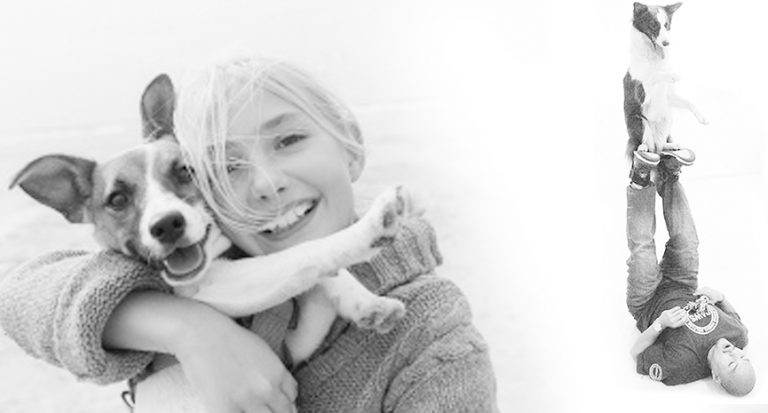Every day, a full spectrum of trends involving animal welfare and rescue converge on one shelter and sanctuary that has operated on the Connecticut-New York state line as a non profit since 1981, Adopt-A-Dog.
Allyson Halm, the director of Adopt-A-Dog describes her non-profit operation as a microcosm of the rescue world.
Indeed a search of Petfinder turns up 680 rescues in New York and over 400 in Connecticut.
What makes Adopt-A-Dog unique is that although it offers dogs for adoption, it operates as a sanctuary, which means that the dogs have a high quality of life at the inn, when there is room. Halm said Adopt-A-Dog also does outreach and education programs, including a new summer camp for children, sessions for scout troops and an internship program.
Still, because Halm tries to maintain a mix to offer, and can only accommodate 30 dogs at a time, her staff accepts less than 20% of the calls from potential owner surrenders. The organization places about 200 dogs a year. Halm said the mix is one third pit bulls, one third seniors and one third dogs with medical or behavioral issues. She categorizes all the dogs in the mix as hard-to-place.
“We do not take in strays,” Halm said. “That is the job of municipal animal control shelters, but we do take in a litter of southern puppies about once a quarter.”
The importation of southern dogs slows the number of adoptions from local shelters, of which so many are pit bulls. And, since Adopt-A-Dog operates entirely from private donations, the proliferation of what she calls local “pop-up rescue groups” that angle for finite donor dollars means more and more of her time is spent fundraising to keep the sanctuary running. (AAD’s Puttin On The Dog’s September fundraiser is key to their efforts.)
While many municipal animal control shelter staff leave in the afternoon and don’t return until the following morning, Adopt-A-Dog operates two shifts a day, in order to span the hours of 8:30 a.m. until 10:00 p.m. There are six full-time paid staff and four part-timers.
“That’s expensive,” Halm said.
In addition to salaries, their budget covers all manner of expenses including rent, utilities, food, beds and medical care. “We are solely funded by private donations,” Halm said. “The sanctuary mentality is that these dogs need to be treated as if this were their home.”
Halm compares the experience of adopting a dog from her sanctuary versus a small rescue or even a big adoption event.
“It’s buyer beware,” said Halm of picking a dog sight unseen online or at a one-day adoption event that brings in dozens if not hundreds of puppies and dogs, often from southern states.
Sarah Hart of Cat Assistance a rescue out of Ardsley, NY, places dogs as well as cats. Like Halm, she is not a fan of massive adoption events that feature imported dogs. “Sometimes an entire adoption event, even for cats, is negatively impacted by a mega canine adoption event,” Hart said.
Halm describes rescue as an industry. “We’re guilty of making the mess. It’s not the animals that are making the mess,” she said of the overpopulation and millions of shelter animals being euthanized every year. “It’s a tough industry. People have to accept it as a business, because some people are making money from this.”
Holly Chasin, who has operated Little Pink Shelter in neighboring Westport for eight years specializes in placing southern dogs in homes in the north. Her Group sees the Southern issue differently. She characterizes the reluctance to spay and neuter in the south as entrenched.
Chasin takes great pride in placing about 100 dogs a year. She does not arrange to transport a dog until it is spoken for, and not before the adopters are interviewed for at least an hour by phone, sometimes over the course of several days. “My approach is I’m almost trying to talk them out of it,” Chasin said.
The Little Pink Shelter founder has an established network of trusted foster families and shelter directors who are in a position to evaluate dogs and vouch for their temperament and personality.
Asked about influx of southern puppies, Chasin said, “No one getting rich from rescuing dogs from the south,” adding that she has no reservations about her focus on southern dogs.
While she admits there are plenty of “rescuers” who cut corners or give their group a similar sounding name to an established, reputable group, she said, “I don’t want to scare anyone away from rescue.”
And, as for the southern dog overpopulation, Chasin said, “It’s like adopting babies. People adopt from China and Russia. Why look at it as a north-south affair? You can have a global consciousness abut dogs.”
Still, Chasin, like Halm, has reservations about giant adoption events.
“How can they screen properly?” she wonders about on the spot applications and reference checks. “It’s the Walmart of puppy adoptions and I wonder what’s the impact on local shelters?” Chasin asked.
Ray Connors, Supervisor of CT Animal Control Division, which is part of the Dept. of Agriculture, said that although there is a downward trend in the number of dogs imported into his state, he is also concerned that some wind up in shelters.
Connors points out that when people adopt southern dogs, local shelter dogs have decreased chances of finding homes.
And while Connors’ department inspects pet stores and groomers, and investigates bites and animal cruelty, they do not oversee rescue groups.
“We don’t regulate rescue groups. We regulate licensed facilities,” he said. “But people who import are required to register with us. Someone going to a rescue with southern dogs should check that the group has the right license.”
Connors said that the Dept of Consumer Protection maintains an e-license list online (look under “animal importer”). Alternately, Connors said people can call the Dept. of Ag directly to ask about an importer 860-713-2506.
Like Halm and Chasin, Connors’ concern about large adoption events is that they encourage impulse purchases. He would like to see southern dogs micro-chipped as a rule, in order to track how many of them wind up in shelters.





